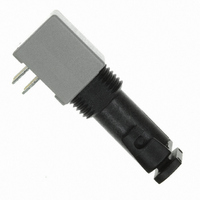HFBR-2316TZ Avago Technologies US Inc., HFBR-2316TZ Datasheet - Page 7

HFBR-2316TZ
Manufacturer Part Number
HFBR-2316TZ
Description
RECEIVER FIBER OPTIC ST 1300NM
Manufacturer
Avago Technologies US Inc.
Datasheet
1.HFBR-2316TZ.pdf
(7 pages)
Specifications of HFBR-2316TZ
Data Rate
155Mbps
Voltage - Supply
4.75 V ~ 5.25 V
Power - Minimum Receivable
-45 dBm
Current - Supply
15mA
Function
Optical Receivers for Industrial applications, 2 x 4, Ext Temp (- 40 C to + 85 C )
Product
Receiver
Wavelength
1300 nm
Maximum Rise Time
5.3 ns
Maximum Fall Time
5.3 ns
Maximum Output Current
25 mA
Operating Supply Voltage
- 0.5 V to 6 V
Maximum Operating Temperature
+ 85 C
Minimum Operating Temperature
- 40 C
Package / Case
PDIP-8
Lead Free Status / RoHS Status
Lead free / RoHS Compliant
Applications
-
Lead Free Status / Rohs Status
Lead free / RoHS Compliant
For Use With
Multimode Glass
Lead Free Status / RoHS Status
Lead free / RoHS Compliant, Lead free / RoHS Compliant
Other names
516-2052
Available stocks
Company
Part Number
Manufacturer
Quantity
Price
Company:
Part Number:
HFBR-2316TZ
Manufacturer:
Avago Technologies US Inc.
Quantity:
188
Notes:
10. Percent overshoot is defined as: ((V
11. The bandwidth*risetime product is typically 0.41 because the HFBR-2316TZ has a second-order bandwidth limiting characteristic.
Figure 6. HFBR-2316TZ receiver test circuit
Figure 8. Typical pulse width distortion vs. peak
input power.
*Mini-Circuits Division of Components Corporation.
For product information and a complete list of distributors, please go to our website:
Avago, Avago Technologies, and the A logo are trademarks of Avago Technologies in the United States and other countries.
Data subject to change. Copyright © 2005-2008 Avago Technologies. All rights reserved. Obsoletes 5989-4776EN
AV02-1500EN - October 21, 2008
100 pF
1. 2.0 mm from where leads enter case.
2. The signal output is referred to V
3. Typical specifications are for operation at T
4. The test circuit layout should be in accordance with good high frequency circuit design techniques.
5. Measured with a 9-pole “brick wall” low-pass filter [Mini-Circuits
6. -11.0 dBm is the maximum peak input optical power for which pulse-width distortion is less than 1 ns.
7. Electrical bandwidth is the frequency where the responsivity is -3 dB (electrical) below the responsivity measured at 50 MHz.
8. The specifled rise and fall times are referenced to a fast square wave optical source. Rise and fall times measured using an LED optical source
9. 10 ns pulse width, 50% duty cycle, at the 50% amplitude point of the waveform.
poses to minimize power supply noise.
with a 2.0 ns rise and fall time (such as the HFBR-1312TZ) will be approximately 0.6 ns longer than the specifled rise and fall times.
3.0
2.5
2.0
1.5
1.0
0.5
0
0
HFBR-2316TZ
The recommended power supply is +5 V on V
E.g.: measured t
P
R
20
- INPUT OPTICAL POWER - µW
0.1 µF
10
40
V = 0 V
6
CC
3, 7
V = -5 V
60
EE
r,f
V
2
~ [(specifled t
O
80
TEST
LOAD
< 5 pF
100
500
CC
, and does not reject noise from the V
PK
- V
r,f
120
)
2
V = -5 V
100%
500 Ω
EE
+ (test source optical t
100 pF
A
)/V
= 25°C and V
Figure 9. Typical rise and fall times vs. tempera-
ture
100%
1 GHz FET PROBE
) x 100% . The overshoot is typically 2% with an input optical rise time ≤1.5 ns.
6.0
5.0
4.0
3.0
2.0
1.0
CC
-60
for typical usage with +5 V ECL logic. A -5 V power supply on V
CC
0.1 µF
-40
= +5 V
t
t
f
r
-20
r,f
TM
TEMPERATURE - ¡C
)
DC
2
, BLP-100*] with -3 dB bandwidth of 100 MHz.
www.avagotech.com
]
.
1/2
0
.
20
CC
power supply. Consequently, the V
40
60
80
100
Figure 7. Typical output spectral noise density
vs. frequency
Figure 10. Normalized receiver spectral
response
150
125
100
1.1
1.0
0.9
0.8
0.7
0.6
0.5
0.4
0.3
0.2
0.1
75
50
25
0
900 1000 1100 1200 1300 1400
0
CC
50
power supply must be filtered.
λ - WAVELENGTH - nm
FREQUENCY - MHZ
100
EE
is used for test pur-
150
200
1500
250
1600 1700
300





















